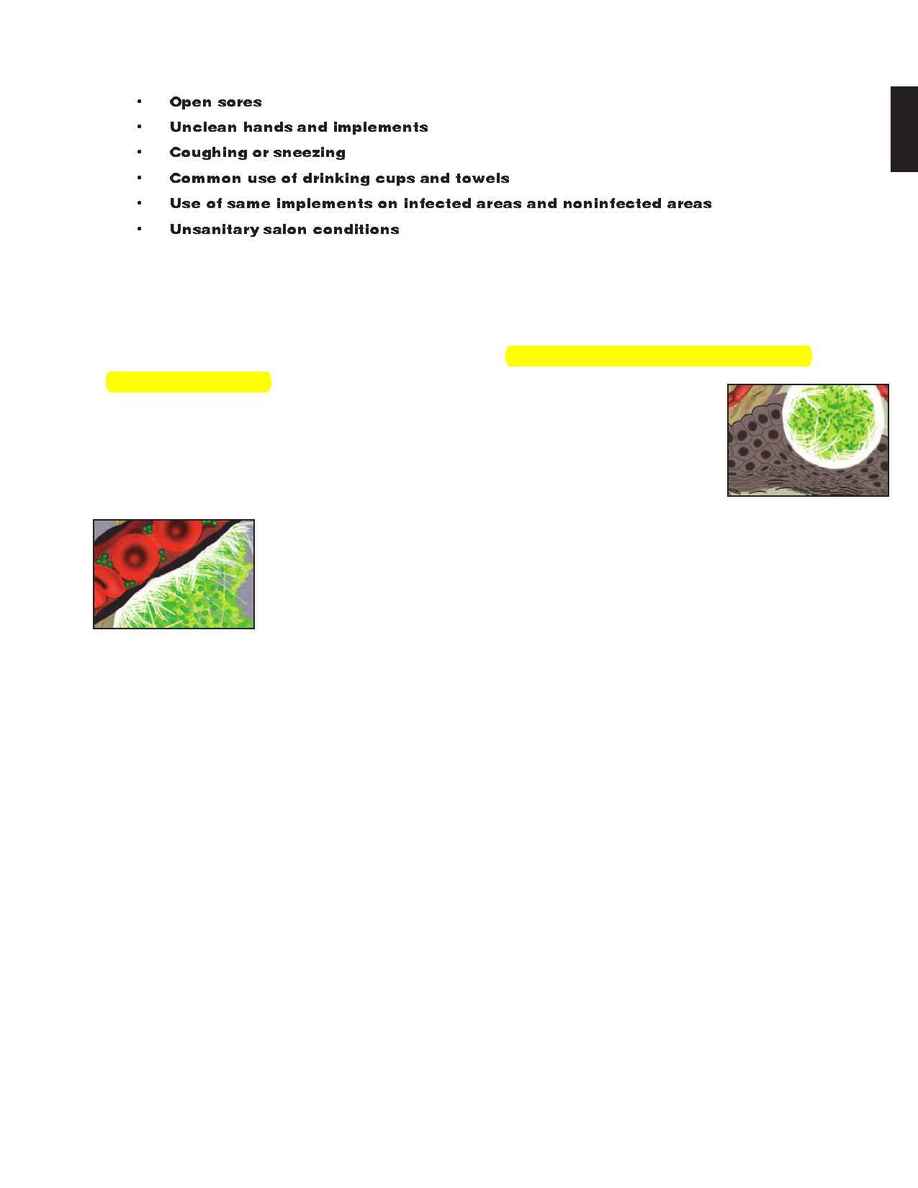
Common means of spreading infection in a salon include:
· Open sores
· Unclean hands and implements
· Coughing or sneezing
· Common use of drinking cups and towels
· Use of same implements on infected areas and noninfected areas
· Unsanitary salon conditions
Infections can be controlled by personal hygiene, public awareness and by practicing infection con-
trol procedures in the salon. If you have a contagious disease, it is important that you practice infec-
tion control procedures in order not to spread the infection. Check with your area's regulating
agency for specific guidelines on dealing with contagious disease and refer a client with a contagious
disease to a physician.
There are two basic classes of infection:
1. A local infection is located in a small, confined area. This is often indicated by
a pus-filled boil, pimple or inflamed area. To remember, think local = little.
2. A general (or systemic) infection occurs when the circulatory system
carries bacteria and their toxins to all parts of the body. To remember,
think general = giant.
It is possible for a person to carry disease-producing bacteria or viruses with no recognizable symp-
toms of the disease. Such a person is called an "asymptomatic" carrier. For this reason the same
infection control procedures should be used with all clients. This practice is called
"universal
precautions."
Immunity
Immunity is the ability of the body to destroy infectious agents that enter the body. To remember,
think immunity gives you ammunition to fight disease. The body has remarkable defense mecha-
nisms that fight infections in two basic ways:
1. Natural immunity is a partially inherited, natural resistance to disease. A healthy body
produces white blood cells and antitoxins to fight disease. Also, the epidermis (outermost
layer of skin) protects the body from microbes. If the skin is punctured, the cut must be
treated to keep microbes from infecting the skin. It is often said that the unbroken skin is
the body's first line of defense in regard to disease.
2. Passive (acquired) immunity is developed through the injection of antigens, which stimu-
late the body's immune response (e.g., inoculation for polio or flu).
51
2
SALON ECOLOGY
